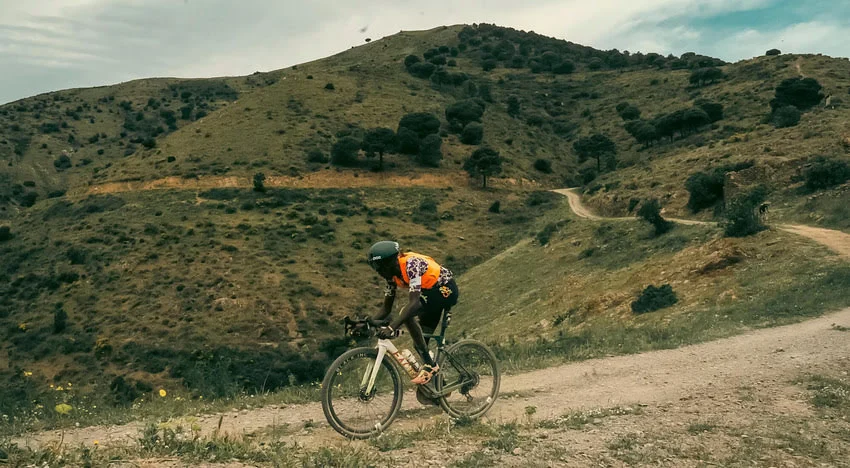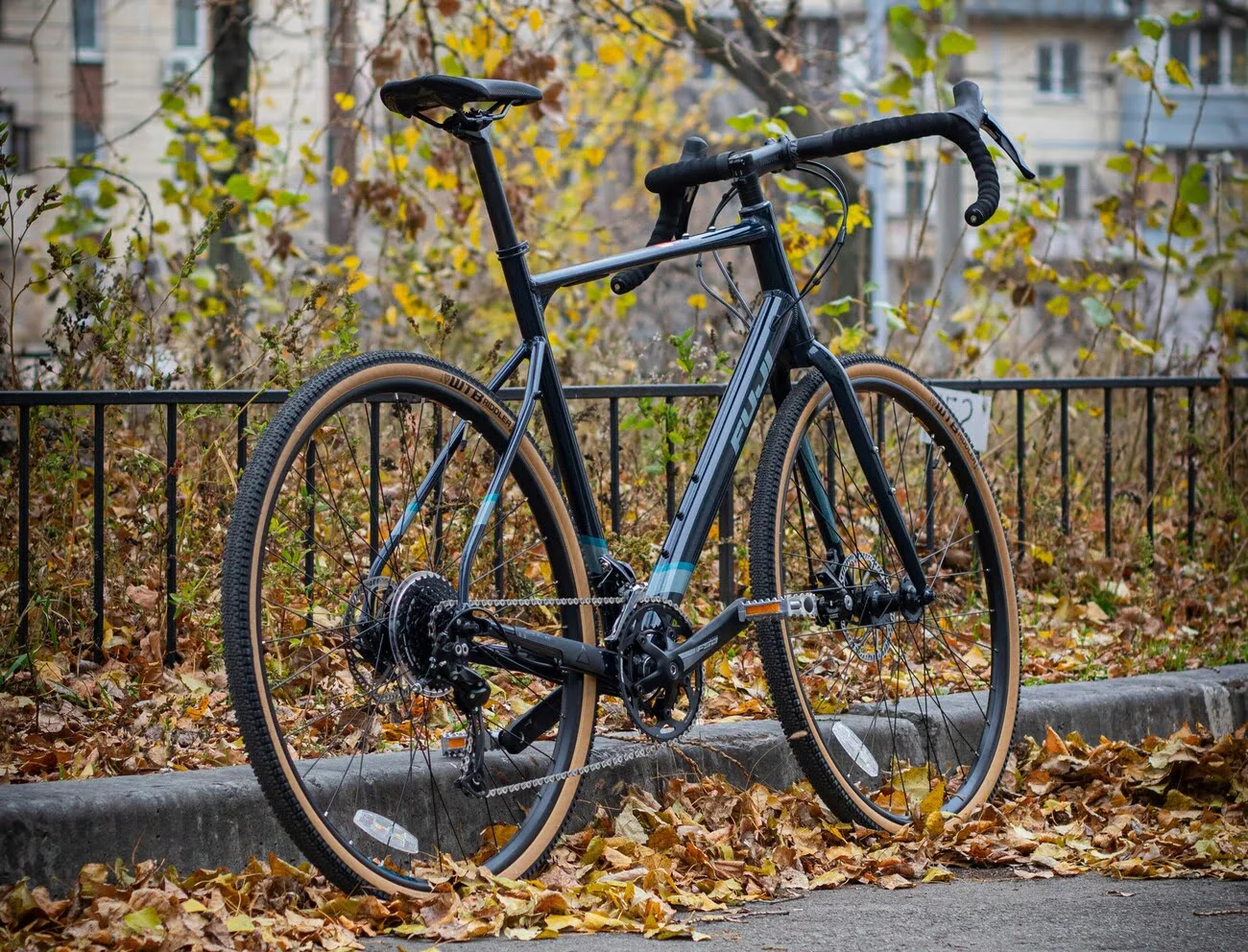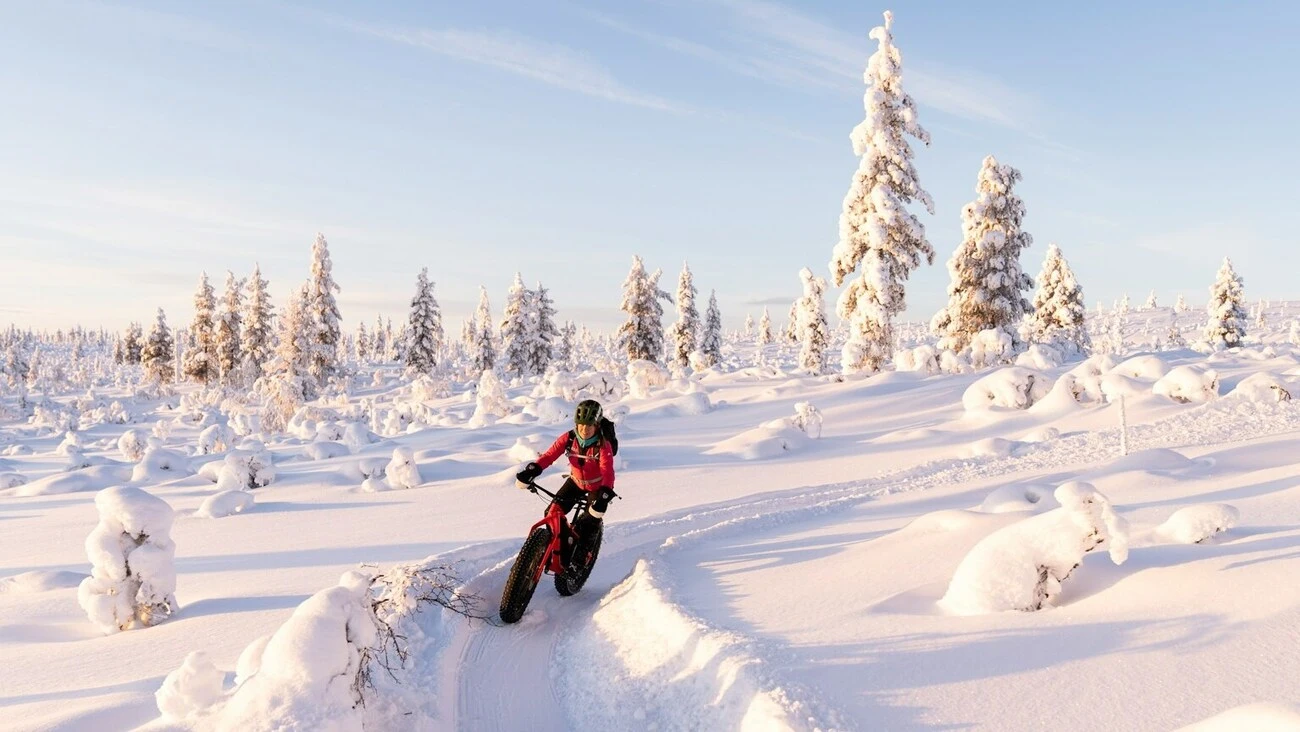When I bought my first gravel bike, I figured geometry didn’t matter much.
Drop bars, chunky tires—good to go, right? Turns out, the way a frame is shaped changes everything.
One bike felt twitchy and fast, another steady and relaxed, and suddenly I realized those little numbers on a chart were actually the secret to how a bike rides.
In this article, I’ll share five very different gravel bikes and break down what their geometry means for real-world riding.
Contents
Key Takeaways (TL;DR)
- Gravel bike geometry isn’t just numbers—it’s what makes one bike feel twitchy and fast while another feels calm and steady.
- Aero race geometry (Factor Ostro) is sharp, aggressive, and best for riders chasing speed on smoother gravel.
- Adventure geometry (Canyon Grizl) prioritizes stability and comfort, especially for long rides with gear.
- All-road geometry (Specialized Diverge) sits in the middle, giving you versatility across pavement and gravel.
- Race-with-comfort geometry (Salsa Warbird) blends speed with endurance for long-distance racing.
- Endurance with adjustable geometry (Giant Revolt Advanced) lets you fine-tune handling for either agility or stability.
5 Gravel Bike Geometry Examples
1. Aero Race Geometry: Factor Ostro Gravel

| Measurement | Value (Size 56) |
|---|---|
| Head Tube Angle | 72.3° |
| Bottom Bracket Drop | 74 mm |
| Trail | 61 mm |
| Chainstay Length | 414 mm |
| Reach | 402 mm |
| Stack | 580 mm |
| Wheelbase | 1029 mm |
Aero race geometry is what happens when you take the sharp, aggressive stance of a road race bike and adapt it for gravel.
The head tube is steeper, the reach is longer, and the wheelbase shorter than you’d find on an adventure-focused gravel bike.
In plain English, that means the bike feels quick, direct, and almost impatient—like it always wants you to push harder on the pedals.
I first noticed this when riding the Factor Ostro Gravel that makes you question if this is a gravel bike or a road bike. The handling felt razor-sharp, and every small input translated immediately into movement.
Aero race setups feel like road bikes on dirt: thrilling, but less forgiving.
On smooth gravel and hardpack roads, that’s exhilarating—it feels like flying low to the ground.
But here’s the catch: the same geometry that makes it lightning fast can also make it less forgiving when the terrain gets loose, rocky, or technical.
You’re trading stability and comfort for speed and responsiveness.
Who should consider it: This type of geometry is perfect for riders coming from a road background who want to carry that fast, aggressive feel into the dirt. It shines in gravel racing or spirited group rides, but it’s not the bike you’d choose for loaded bikepacking or all-day comfort.
2. Adventure / Bikepacking Geometry: Canyon Grizl

| Measurement | Value (Size L) |
|---|---|
| Head Tube Angle | ~ 72° |
| Reach | ~ 409 mm |
| Stack | ~ 605 mm |
| Wheelbase | ~ 1055 mm |
| Chainstay Length | ~ 435 mm |
Adventure / bikepacking geometry is all about stability, comfort, and carrying capacity.
With the Grizl, the geometry leans toward a taller stack, longer reach, a fairly long wheelbase, and modest chainstay length. These features combine to make the bike feel more planted, especially with gear or when riding over rough, unpredictable terrain.
You’re less likely to be tossed around by rocks or washboard gravel, and more likely to sit more upright (relative to race-geometries), which helps with endurance and spotting what’s ahead.
What I’ve come to see is that this kind of geometry gives you more forgiveness—smooth at slow speeds, controlled descending, predictable steering when things get loose. This kind of balanced setup is common even on budget gravel bikes, which is why they’re such a popular first choice.
Adventure geometry trades speed for stability, letting you ride all day with confidence.
The trade-off is that you lose some of the snappy agility you get with race geometry; you won’t whip around tight corners as sharply, and accelerating out of slow turns feels more deliberate.
Who should consider it: This type of geometry is ideal if you do multi-day rides, loaded with bags, want the comfort over long hours, or explore mixed surfaces (gravel roads, forest tracks, remote paths). If your dirt rides include big climbs with gear, loose surfaces, or long distance, adventure geometry gives you breathing room—both literally and figuratively.
3. Versatile All-Road Geometry: Specialized Diverge

| Measurement | Value (Size 56) |
|---|---|
| Stack | ~ 599 mm |
| Reach | ~ 392 mm |
| Head Tube Angle | ~ 71.75° |
| Chainstay Length | ~ 432 mm |
| Wheelbase | ~ 1042 mm |
| Bottom Bracket Drop | ~ 80 mm |
What “versatile all-road geometry” means is this: you want something that can do a bit of everything without feeling like you’re compromising too much in any one direction.
With the Diverge, that geometry hits a kind of sweet spot. The stack is tall enough that you’re not bent over like in a pure race bike, but the reach is long enough that you can still stretch out a bit when you want speed. The head tube angle isn’t super steep, so control feels solid, but it’s not so slack that you can’t handle turns with some punch.
- Related read: Specialized Bikes Brand Review
Chainstay length and wheelbase are in the middle zone — long enough to give stability when going fast, especially on rough roads, but not so long that the bike becomes sluggish in tight, twisty sections. And the bottom bracket drop helps lower your center of gravity just enough to feel surefooted, especially at speed or over rough surfaces.
Many bikes in our best gravel bikes roundup use this kind of geometry because it appeals to riders who want one bike for everything.
Who should consider it: This type of geometry is for someone like you if you want one bike that isn’t forced to live only on gravel or only on pavement. If your rides are mixed—say your weekend ride starts on tarmac, then drifts onto gravel, maybe you hit some forest tracks—you want something with all-road geometry. It gives you confidence everywhere, even if it won’t be the lightest or most extreme in either the race or bikepacking world.
4. Gravel Race With Comfort Geometry: Salsa Warbird

| Measurement | Value (Size 56) |
|---|---|
| Head Tube Angle | ~ 70.75° |
| Chainstay Length | ~ 430 mm |
| Wheelbase | ~ 1038 mm |
| Stack | ~ 585 mm |
| Reach | ~ 381 mm |
| BB Drop | ~ 70 mm |
Gravel race with comfort geometry is like trying to have your cake and eat it too—speed meets endurance without punching yourself in the back.
The Salsa Warbird shows what that blends into: moderate head tube angle, consistent chainstay length, and a wheelbase that’s neither ultra-short nor wildly stretched.
In practice, that means the bike handles with responsiveness on smoother terrain, but it has built-in forgiveness for washboard gravel and chatter.
What impresses me about this geometry type is how it balances aggression with rideability.
The stack/reach numbers tell you you’re not in a purely upright posture, but you’re not crouched like you’re going to sprint all the time. The bottom bracket isn’t super low either, so you retain stability through rough sections—less feeling of scraping your pedals or worrying about clipping a rock.
Who should consider it: This geometry type is for riders who want to push pace on gravel races, but also want to stay fresh deep into the ride. If you do mixed surfaces with some rough downturns, or you want to ride hard and stay in one piece—this is the kind of geometry that makes that possible.
5. Endurance Gravel With Adjustable Geometry: Giant Revolt Advanced

| Measurement | Value (Medium-size, “short” chip setting) |
|---|---|
| Head Tube Angle | ~ 71.5° |
| Reach | ~ 387 mm |
| Stack | ~ 586 mm |
| Wheelbase | ~ 1026 mm |
| Chainstay Length | ~ 425 mm |
| Bottom Bracket Drop | ~ 80 mm |
When I say “endurance gravel with adjustable geometry,” I mean a frame built to go a long way comfortably—but also giving you levers to tweak how it handles depending on what you need that day.
The Giant Revolt Advanced nails this. With its moderate head tube angle, balanced reach & stack, and not-ridiculously steep chainstay lengths, it gives you stability and enough comfort to ride for hours without feeling beat up.
Here’s where the adjustable part comes in: the flip-chip on the rear dropout.
Flip it one way and you get a shorter wheelbase—snappier handling, more playful when the terrain is tighter. Flip it the other and you get a longer wheelbase—more planted, more confidence when you load up gear or face rough, fast descent sections.
Who should consider it: What I’ve learned is that this kind of geometry is fantastic if you don’t want to commit to just racing or just hauling. If some days you’re pushing for speed, other days you’re loaded with bags and want comfort, adjustable geometry gives you both.
What Is Gravel Bike Geometry? Here’s What You Should Know
When you hear “geometry,” you might picture rulers and protractors. But in cycling, geometry simply means the shape and angles of the bike’s frame.
Those little numbers—head tube angle, wheelbase, bottom bracket drop—decide whether a bike feels fast and twitchy or stable and comfortable. It’s less about memorizing specs and more about understanding how the frame’s design shapes your riding experience.
Geometry isn’t just numbers—it’s the personality of the bike.
For example, if you’ve ever wondered why cyclocross bikes feel sharper and more aggressive, while gravel bikes feel more planted, that comes down to geometry. I explain this in more detail in my gravel vs cyclocross article.
Understanding Key Gravel Bike Measurements
A few measurements tell you most of what you need to know:
- Head Tube Angle: Steeper angles make the steering feel quick and responsive, slacker angles slow it down and add stability.
- Reach & Stack: Reach is how stretched forward you feel; stack is how upright you sit. Together, they define your posture.
- Wheelbase: A shorter wheelbase feels agile, a longer one feels planted—especially on descents.
- Bottom Bracket Drop: This is how low the crank sits relative to the wheels. Lower means more stability, higher means more clearance.
- Trail: The balance between stability and agility in the steering, often influenced by head angle and fork design.
You don’t have to be an engineer to get this. Think of it like a car—sports cars hug the corners (steep, short geometry), while SUVs are steady and forgiving (slacker, longer geometry).
How Different Gravel Geometries Translate to Riding

The fun part about gravel bikes is how dramatically different they feel depending on their geometry.
Aero race setups, like the Factor Ostro, ride almost like road bikes on dirt—they’re fast, aggressive, and thrilling, but definitely less forgiving when things get bumpy.
On the other end of the spectrum, adventure or bikepacking geometries (think Canyon Grizl) stretch the wheelbase and raise the front end, giving you a more upright and stable ride that’s perfect for long days with gear strapped on.
The right gravel geometry isn’t about charts—it’s about the kind of rides you actually want to do.
Somewhere in the middle, all-road geometry, like the Specialized Diverge, strikes a balance—steady on gravel, quick enough on pavement, and never extreme in either direction.
Then you’ve got race-with-comfort designs, like the Salsa Warbird, which let you push hard without punishing your body over ultra-long rides.
And finally, bikes like the Giant Revolt Advanced bring adjustability into the mix, letting you choose whether you want snappy handling or rock-solid stability just by flipping a chip.
Once you’ve experienced each, it’s clear that geometry isn’t just a number—it’s the personality of the bike.
Final Thoughts
Looking back, I wish I had understood gravel bike geometry sooner.
It’s not just a set of numbers—it’s the reason one bike feels twitchy and fast while another feels steady and forgiving.
Riding everything from aero race setups to relaxed adventure builds has shown me that geometry really decides how much you’ll enjoy the ride.
For me, the biggest lesson is simple: choose the geometry that fits the kind of rides you actually want to do.
Once I started thinking that way, picking the right bike became a whole lot easier.




